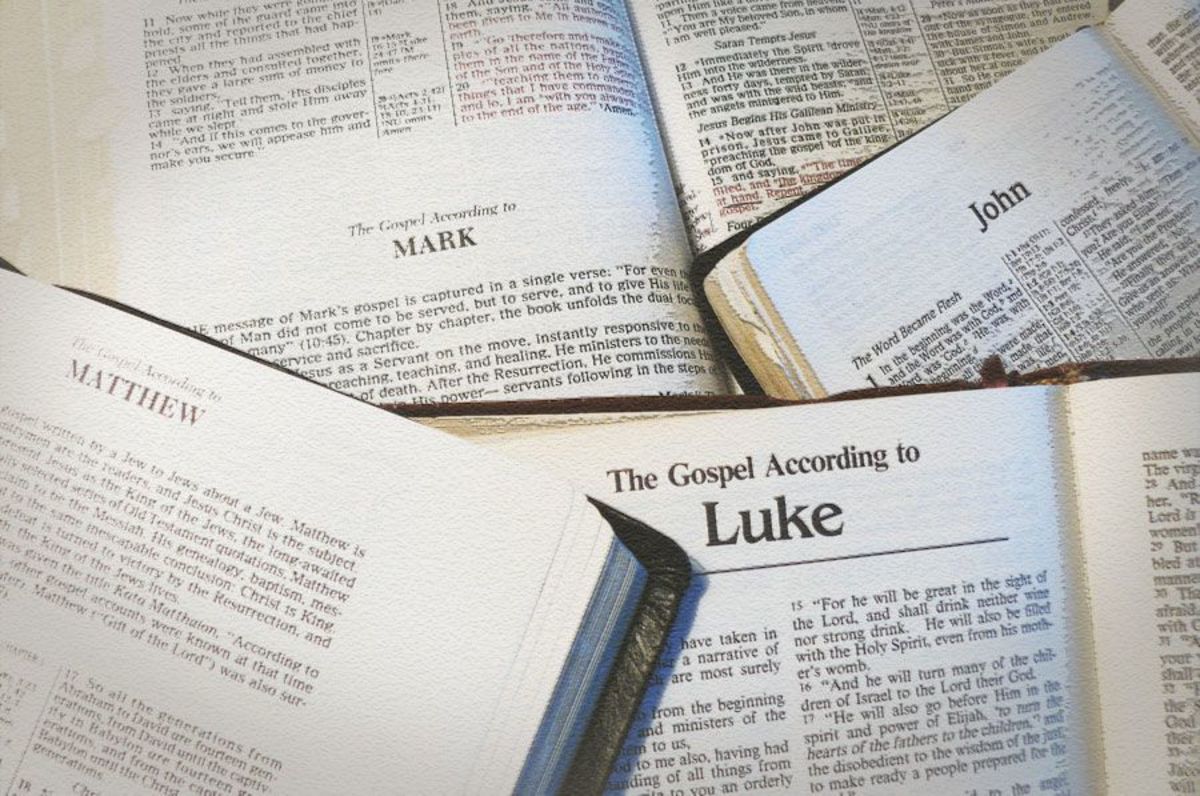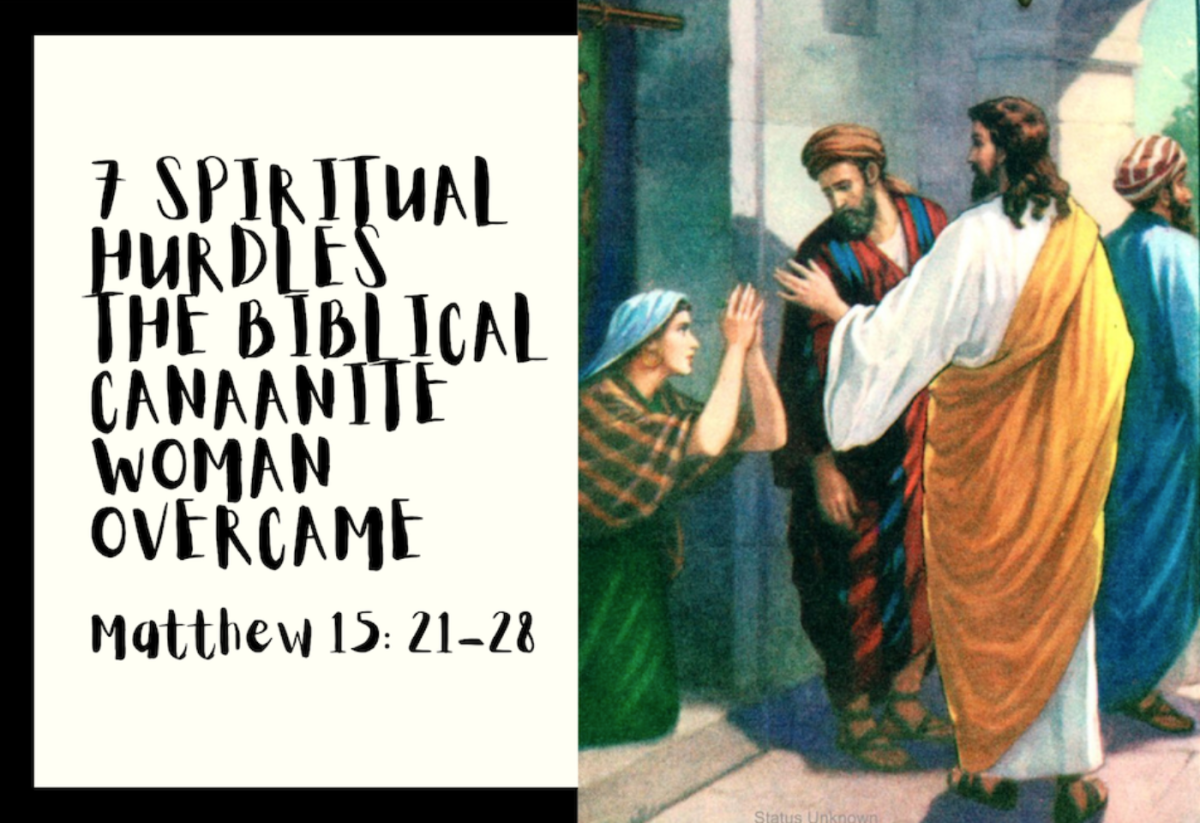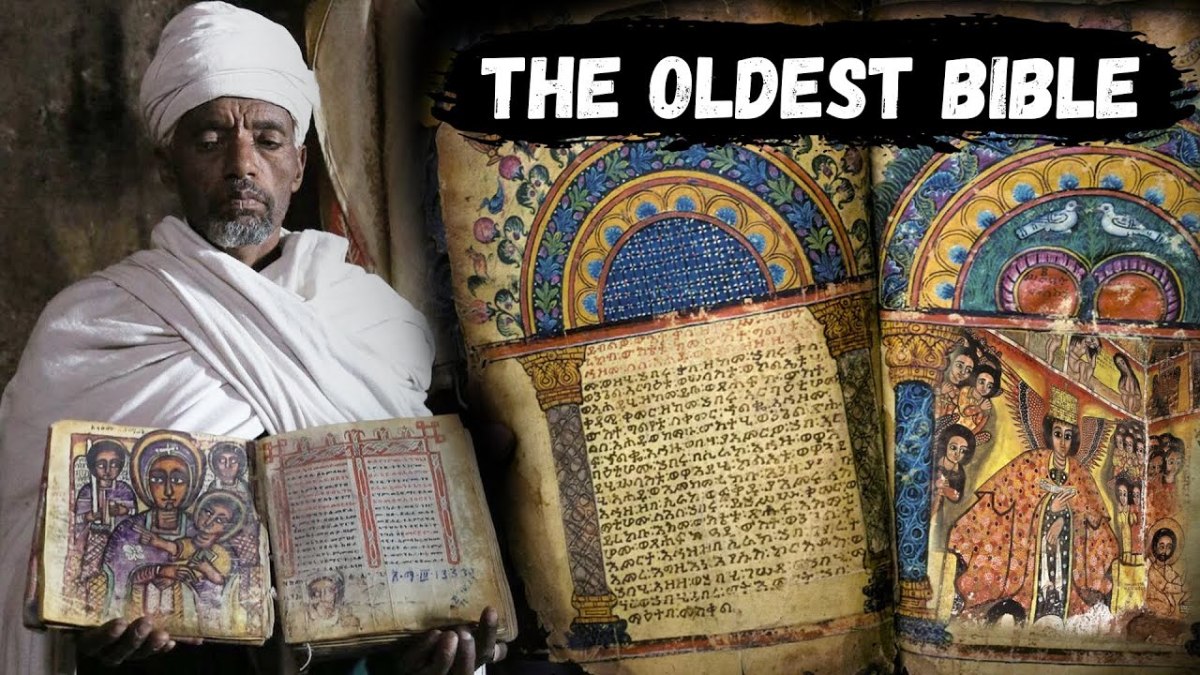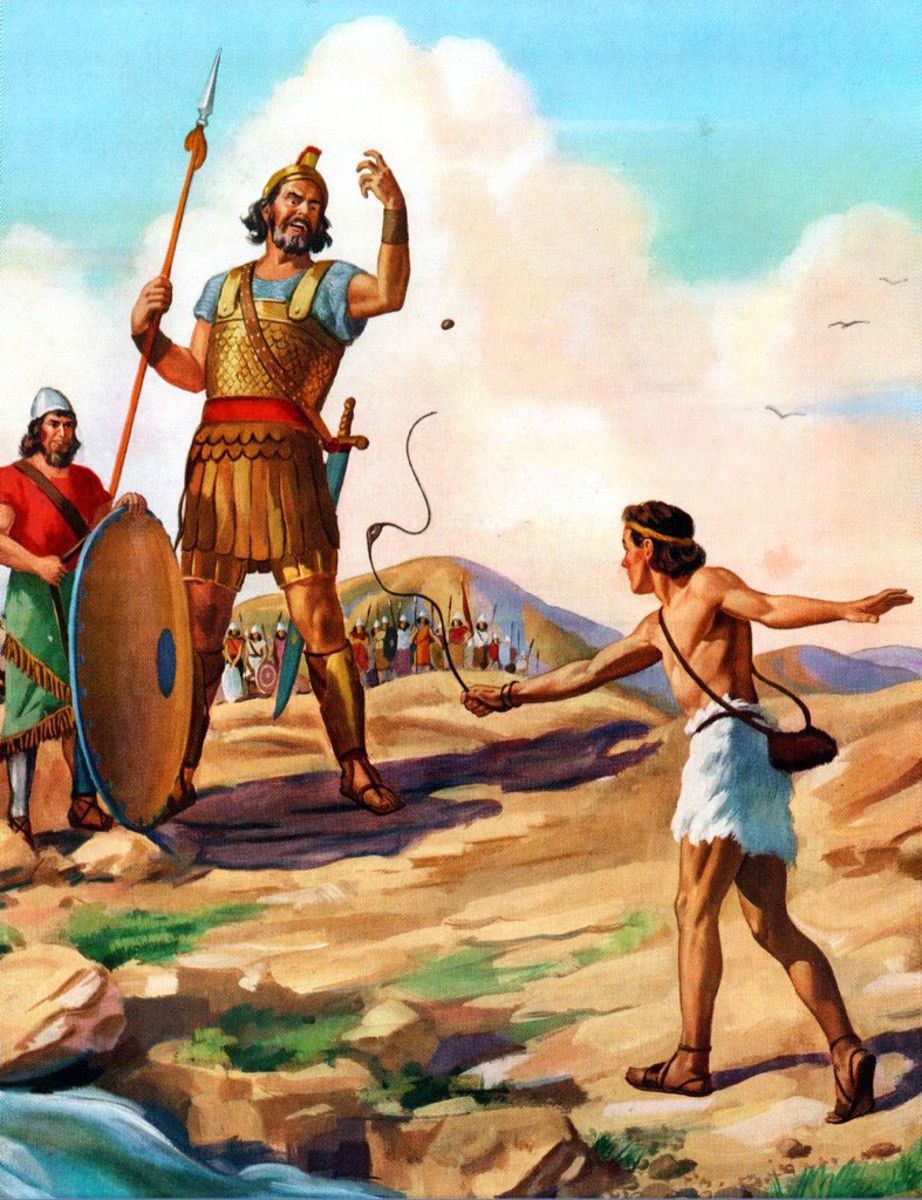Bible: What Does Mark 11-12 Teach Us About Jesus' Triumphal Entry, the Cursing of the Fig Tree, and the Widow's "Mite"?
Jesus' "Triumphal Entry" into Jerusalem
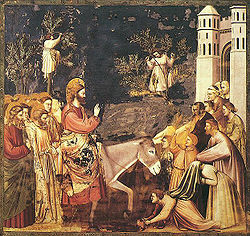
Prophetic Fulfillment
view quiz statisticsMark 11
In preparation for the “Triumphal Entry” into Jerusalem, Jesus sends two disciples to borrow a very special colt from a friend in Bethphage (vv. 1-2).
Whereas Matthew mentions the colt’s donkey mother (cf. 21:2), Mark emphasizes the young animal “on which no one has sat,” and is silent about the presence of its mother (v. 2).
In fact, Mark spends several verses detailing the process whereby the disciples procured the beast: first, they answered an actual question in accordance with Jesus’ command (vv. 3, 5-6; cf. Mt. 21:3); second, they found the colt tied by the door outside on the street and loosed it (v. 4), and third, they brought the animal to Jesus and threw their clothes on it (v. 7).
Matthew, on the other hand, merely mentions the disciples’ obedience (21:6); he emphasizes that their action fulfilled an Old Testament prophecy—something Mark chooses not to do (undoubtedly because he is writing to a Gentile audience for which Zechariah 9:9 would have held little, if any, significance).
Peter (Mark’s source) remembers the “multitudes’” (cf. 21:9) exclamation—“Blessed is the kingdom of our father David that comes in the name of the Lord” (v. 10)—more than Matthew does.
Still, the latter apostle recalls a general inquiry about Jesus’ identity and the multitudes’ incomplete response (21:10-11), while the former does not.
Instead, Peter tells Mark to record that Jesus actually entered the temple on Palm Sunday, and visited for awhile before leaving for the night (v. 11).
[Matthew seems to indicate that Christ not only entered the temple on Sunday, but that He also cleansed it on Sunday (cf. 21:12-17).
Mark, on the other hand, records its cleansing on Monday (11:15-19)].
Fig Leaves

Significance of the Cursing
view quiz statisticsCursing the Fig Tree
Monday morning dawns, and Jesus seeks breakfast at a local fig tree.
[Mark, however, comments that it was not the season for figs (v. 13).
Why, then, should Jesus expect to find anything but leaves on the tree?
Perhaps He hoped to find a few young fruits, since leaves and fruit normally appear at the same time (Ryrie, New Testament Study Bible, 45).]
Interestingly, the disciples hear Christ curse the tree.
Whereas Matthew records that “immediately the fig tree withered away” (21:19), and the amazed disciples appear to question Jesus about this miracle right then and there (21:20), Mark indicates that not until Tuesday morning did they notice the “fig tree dried up from the roots” (11:20).
[Matthew does not seem too concerned about chronology].
While visiting “His Father’s house” in Jerusalem, Jesus takes care of business rather violently; Mark even notes that “He would not allow anyone to carry wares through the temple” (v. 16).
He has Jesus phrase His conflation of Isaiah 56:7 and Jeremiah 7:11 in question form (v. 17), whereas Matthew makes it a declarative statement (21:13).
Mark merely recounts the general reactions of both Jewish leaders and the people (fear and astonishment, respectively) [v. 18].
Matthew, however, reports children’s praise, an angry reaction from the Jews, and Jesus’ Scriptural response to them (21:15-16)—all details that Mark found unnecessary to include.
[Again, the writers present the events as eyewitnesses would: they select details according to their purpose].
This principle holds true again, as Mark and Matthew differ slightly in their recording of Jesus’ response to Peter regarding the withered fig tree (vv. 22-24; cf. Matt. 21:21-22).
According to Mark, Jesus prefaces His remarks with “Have faith in God” (Mark 11:22); however, the Lord says nothing about the fig tree, but immediately proceeds to discuss “removing mountains” (v. 23a).
Matthew mentions Christ’s words about having faith unmixed with doubt, but does not specify an object of that faith; he also records the Lord’s remarks about the fig tree before His reference to removing mountains (21:21).
Mark connects his verb phrase “does not doubt in his heart” with casting mountains into the sea, not with the fig tree (v. 23b), and adds two closely related statements regarding the importance of believing prayer (vv. 23c-24).
Even more instruction follows about prayer and a related issue: forgiveness—something Matthew completely excludes (vv. 25-26).
Chapter 11 concludes with Jesus’ encounter with the chief priests, scribes, and elders who questioned His authority to cleanse the temple.
The language of both gospels adheres closely to one another (vv. 27-33; cf. Matt. 21: 23-27); no differences worthy of comment exist.
Mark Different Than Matthew
view quiz statisticsMark 12
Mark passes over Matthew’s “The Parable of the Two Sons” (see Matt. 21:28-32), and pens “The Parable of the Wicked Vinedressers” (vv. 1-12).
Except for a few significant variations, Mark’s account is essentially the same as Matthew’s. Among the differences are the following:
(1) Mark merely states that a man sent a servant; Matthew records that a landowner sent servants (vv. 1-2; cf. vv. 33-34);
(2) Mark is more verbose about the purpose of the servant than Matthew is (v. 2; cf. v. 34);
(3) Mark has the vinedressers beat the servant and send him away empty-handed (v. 3); Matthew records that they beat one servant, kill one, and stone another (v. 35);
(4) Mark’s second servant they wound in the head and send away, having shamefully treated him; his third they kill, and many others they alternately beat and kill (vv. 4-5); Matthew groups the servants into a unit that was “more than the first,” and reports their treatment generally (v. 36);
(5) Of most significance, Mark’s Jesus answers His own rhetorical question about what the owner will do to the vinedressers who killed his son (v. 9); Matthew’s Jesus allows the chief priests and Pharisees to condemn themselves by their response to His question (v. 41);
(6) Mark omits Matthew’s judgment against these Jewish leaders (cf. Matt. 21:43-44); again, the destiny of the Jewish nation would not mean as much to his Gentile readership as it would have to Matthew’s.
Jesus and Jewish Leadership
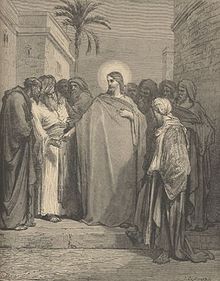
Jesus Confronts Jews
Matthew inserts “The Parable of the Wedding Feast” between the previous parable and Jesus’ discussion with the Pharisees about paying taxes to Caesar (cf. 22:1-14); Mark omits the Wedding Feast parable altogether.
Instead, he focuses on a barrage of efforts made by the Jewish leadership to discredit Him: first, the Pharisees and Herodians (vv. 13-17); second, the Sadducees (vv. 18-27); and third, a scribe (although this scribe actually sought answers honestly) [vv. 28-34].
First, he records Jesus’ encounter with the Pharisees and the Herodians and their “discussion” about taxes.
Apparently, certain Pharisees send their disciples—“some of the Pharisees” (v. 13; cf. Mt. 22:16)—to try to trip up Jesus.
[Why they felt that they could succeed in this endeavor remains a mystery.]
Except for arranging their flattering statements in a different order, Mark covers the same material as Matthew does (v. 14; cf. Mt. 22: 16).
He, however, portrays Jesus’ opponents as immediately leaping into attack mode, assailing Him with the question of substance (“Is it lawful to pay taxes to Caesar, or not?”) without first employing the more sophisticated tactic: a transitional query (“Tell us, therefore, what do you think?”), such as what Matthew includes (cf. 22:17).
Mark also introduces another question—one which Matthew omits (“Shall we pay, or shall we not pay?”) [v. 15a]
More slight variations follow.
Compare Mark’s “He, knowing their hypocrisy” (v. 15b) to Matthew’s “He perceived their wickedness” (22:18), as well as the former gospel’s question “Why do you test Me? Bring Me a denarius . . .” (v. 15) to the latter’s “Why do you test Me, you hypocrites? Show me the tax money” (22:19).
For the rest of the passage, both Mark and Matthew pen essentially the same words.
Again, either the Holy Spirit does not consider Jesus’ exact words as the crucial issue, or Jesus actually spoke all of these words.
At any rate, the Apostles Matthew and Peter include only what pertained to their audience.
A second group—the anti-resurrection Sadducees—corner Him next.
Neither Mark nor Matthew introduces any noteworthy ideas or words that differ from each other.
However, Matthew’s Sadducees intimate by their use of the phrase “with us” (22:25) that this account of the woman having seven separate husbands who die without leaving offspring may be an actual case; Mark makes them sound as if they are fabricating an illustration (v. 20).
In addition, Matthew cites Jesus as declaring His opponents as mistaken (22:29), while Mark puts His response to their query in question form (v. 24).
On some occasions, though, Mark does use explanatory terminology instead of the technical term to accommodate Gentiles unfamiliar with Jewish theology.
For instance, he writes “in the resurrection, when they rise” (v. 23), “when they rise from the dead” (v. 25), and “concerning the dead, that they rise”; Matthew merely records the phrases “in the resurrection” (vv. 28, 30) and “concerning the resurrection” (v. 31) without noting what the term signifies.
Moses and the Burning Bush
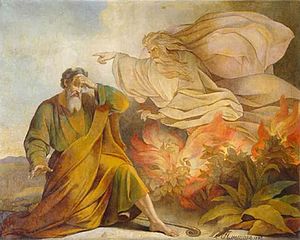
In addition, Mark specifically delineates the exact location and subject matter of a Scripture passage—“the book of Moses, in the burning bush passage” (v. 26)—whereas Matthew merely states, “what was spoken to you by God” (22:31). Matthew records the multitudes’ continued astonishment (22:33), but Mark does not.
A lawyer among the Pharisees (22:34), one of the scribes (v. 28a), now approaches Jesus, impressed with His answers to the Sadducees, and asks Him a fundamental question, “Which is the foremost (great) commandment of all (in the law)?” (v. 28b).
[Why ask such a puerile question to a Man who has thoroughly stumped the nation’s doctors of theology?]
Mark provides a more complete record of Jesus’ answer than does Matthew, adding the Sh’ma clause of Deuteronomy 6:4 (v. 29) and the word “strength” to his version of the “You shall love the LORD your God” dictum (v. 30).
His account also differs from that of the OT.
See comparison below:
Sh'ma Comparison
Mark
| Matthew
| Deuteronomy
|
|---|---|---|
heart, soul, mind, strength
| heart, soul, mind
| heart, soul, strength
|
Jesus distinguishes Himself in the scribe’s eyes by citing Leviticus 19:18—a verse commanding love for neighbor as oneself—as a companion statement to the famous passage in Deuteronomy (vv. 31-33).
After hearing the scribe’s good response that agreed with His answer, the Lord assumes the authority in the relationship, informing him that he is near to entering the kingdom (v. 34).
David
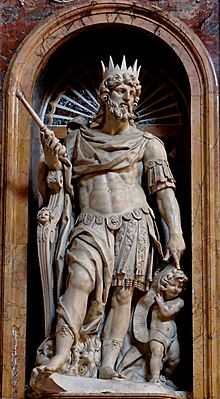
David's Son is Also David's Lord
view quiz statisticsWho is the Messiah?
Later, Jesus again confronts the Pharisees, this time regarding the identity of the Christ.
Repeating to them the scribes’ opinion—Matthew does not mention scribes at all, but instead records the answer as coming from the Pharisees (22:42)—that the Messiah is the son of David (v. 35)—an opinion that they undoubtedly formulated from 2 Samuel 7—Mark then cites the famous Holy Spirit-inspired psalm of David that designates the Messiah as the king’s Lord (v. 36; cf. Ps. 110:1).
Christ’s query further stumps the Jewish leaders (cf. Mt. 22:46, but see Mk. 12:34), but delights the multitudes/common people (v. 37).
In contrast to Matthew’s extensive recording of Jesus’ lengthy denunciation of the scribes and Pharisees (23:1-39), Mark pens a mere three verses that reprove the former group, warning the “common people” to beware of them (vv. 38-40).
His instruction comes in the form of three relative clauses and a concluding remark.
First, Jesus chastises their addiction to proud ostentation (“who desire to go around in long robes”) [v. 38a]; second, He criticizes their love of adulation and elitism ([who] love greetings in the marketplaces, the best seats . . . and the best places) [vv. 38-39]; and third, He condemns their avarice and hypocrisy (“who devour widows’ houses, and for a pretense make long prayers”) [v. 40].
His judgment: such sins deserve worse punishment than do others.
Devouring Widows' Houses
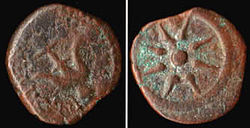
The Correct Interpretation?
Which answer below fits the "widow's mite" context better?
The Widow's Mite
An episode Matthew omits, the “Widow’s Two Mites,” sheds light on the cruelty of false religion (vv. 41-44).
A key word in verse 41—“how”—indicates that the Lord considers one’s attitude in giving as far more important than how much one gives.
Whether Mark’s word choice—he writes that the poor widow “threw” in two mites (very small copper coins; Ryrie, New Testament Study Bible, 92)—shows how carefree she treated her whole livelihood is debatable (v. 42).
[Perhaps she threw them in the receptacle out of the bitterness of her soul].
Does the fact that she gives all she had to live on (apparently without a hint of concern) prove that her heart is right with Him, and that her treasure resides in heaven where her “heart” is?
Or is it an example of false religion "devouring widows' houses"? (vv. 43-44; cf. v. 40).
© 2014 glynch1

